I have limited time today to write a blog post and last night I was…
Kyoto Report 2023 – 6
This Tuesday report will provide some insights into life for a westerner (me) who is working for several months at Kyoto University in Japan.
Japanese carpentry
Asian carpentry in general and Japanese carpentry in particular is a work of art.
I love stopping near building sites while I am out on my bike to study the meticulous work that is involved in building a house in Kyoto.
I recently had first-hand experience with house building in Australia and while the construction company was first class in every way, the Japanese carpenters go to the next level.
The joint work is complex and very accurate.
They build their frames from ground up rather than truck them in pre-built.
This photo is from a house building site in the West of Kyoto.
Unintended consequences of the good variety
Kyoto is organised on a rectangular grid and that defines the main roads.
But in between the main roads there is a myriad of small winding streets, drains, staircases that I cruise down on my bike, instead of using the main roads.
And as a consequence, I periodically stumble across gems that I didn’t expect to find.
Last weekend, we rode all the way across town from the East of Kyoto, where we live to the Western fringe.
Our aim was to go to the Zen temple – Ryōan-ji – which is located in the north-west of the city.
The feature of the temple is the famous – Japanese dtry garden (枯山水 or karenansui) – where a scaled-down version of some landscape is captured in a confined space, in this context a rectangular (25m x 10m) space enclosed on two sides by a clay wall that was boiled in oil and buildings on the other two sides.
Over time, the oil has leeched out of the clay and in the process has created a very distinctive visual pattern, which, in itself, is worth going to see.
The garden contains 15 rocks of different sizes and shapes carefully arranged in a five grouped piles with a small surround of living moss embedded in a large rectangular area of white pebbles that are carefully raked in to various patterns.
A visitor sits on a terrace abutting one of the longer sides and studies the garden.
It is austere but somehow contemplative.
I have read many accounts of this garden – yes, I study gardens in my spare time – and there have been countless attempts to attribute ‘meaning’ to what we behold.
One commentator though, I think, has it down correctly (translation from the 2003 book by Günter Nitschke ‘Le jardin japonais : angle droit et forme naturelle’):
The garden at Ryōan-ji does not symbolize anything, or more precisely, to avoid any misunderstanding, the garden of Ryōan-ji does not symbolize, nor does it have the value of reproducing a natural beauty that one can find in the real or mythical world. I consider it to be an abstract composition of ‘natural’ objects in space, a composition whose function is to incite meditation.
Anyway, here is one part of the rock garden:
But sometime after you exit the actual shrine and start to wander through the gardens, the unintended consequence emerges.
There is no reference to this place on the official guide you pick up at the entrance.
But through a little arbour, embedded in the most beautiful garden is smaller temple – 龍安寺 西源院 (the Ryoanji Saigen-in Temple) – which houses a delightful vegan restaurant – Ryoanji Yudofu – (or that serves the most glorious lunches at really reasonable prices.
As you approach the building you see it through the garden.
The cafe name refers to its only dish – 湯豆腐 or yudofu – which is hot boiled tofu (soft) mixed in a broth of seven herbs.
It comes with a dipping sauce of soy and ginger, plus rice and some pickles.
This is what the served table looks like:
And this is what you see while having lunch.
While vegan food is not difficult to find in Kyoto having it served in this sort of environment (which is Covid safe and peaceful) is rare.
Most of the vegan cafes are small and crowded and since Covid I have avoided them.
We were bemoaning earlier in the day that we would love to find a nice vegan cafe and whether we should risk going to the ones we know from previous periods here.
And then out of the forest, this gem appeared.
That is what happens a lot in Kyoto if you walk or ride around outside of the main tourist areas.
In the little back streets, there are gems to be found.
And a distinctive feature of the city is that industry, small manufacturing etc, homes, and shops are all mixed in each locality, rather than suburbs being segmented by use.
I love how Kyoto has more bike parks at shopping centres than car parks
I sometimes ride along the Kamo river out north to the Kitaoji Shopping Centre where Muji is located.
It sells all manner of things at really reasonable prices – great for shirts when you haven’t packed enough!
Underneath the shopping complex, which in Australia is usually reserved for car parking, you find the bike park.
Kyoto is such a bike friendly place.
Another week in Kyoto.
Next week I will report on how to get lost on Mt Daimonji and how to avoid it – hint: don’t ask locals who sport latest-state-of-art mapping apps!
That is enough for today!
(c) Copyright 2023 William Mitchell. All Rights Reserved.

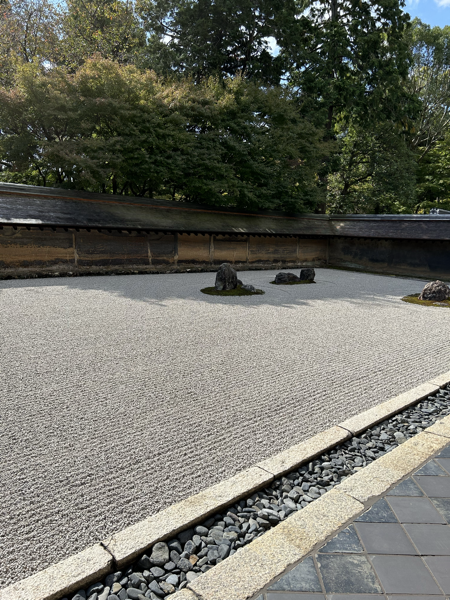
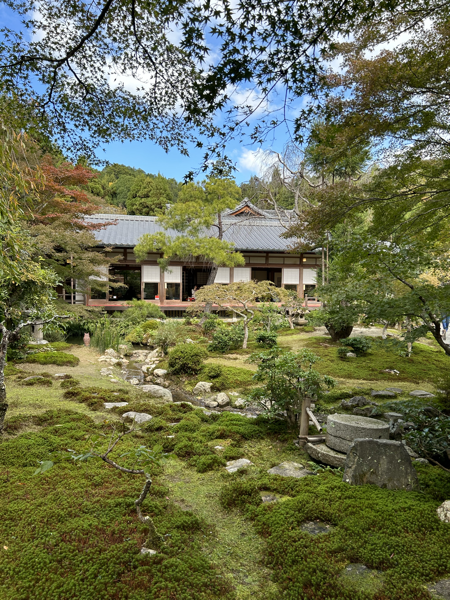
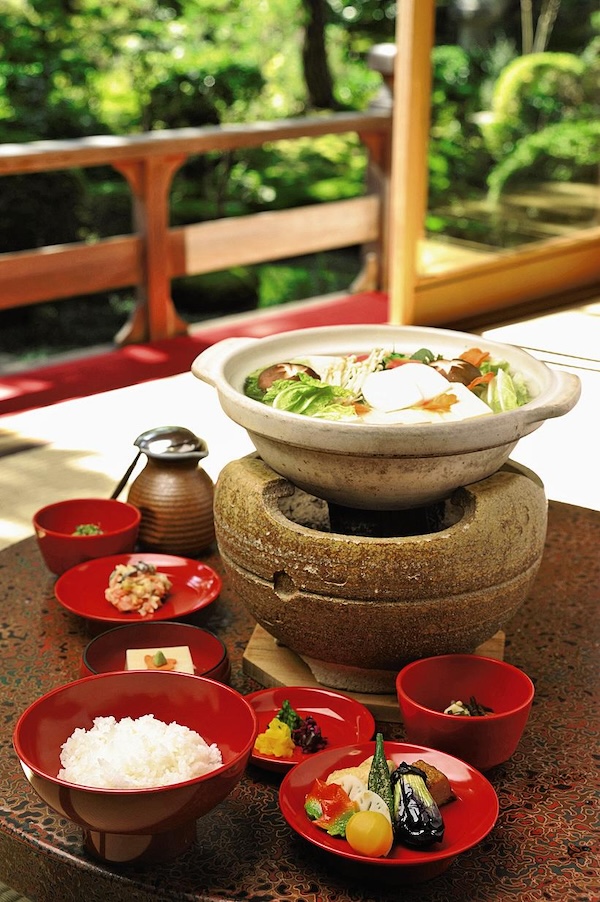
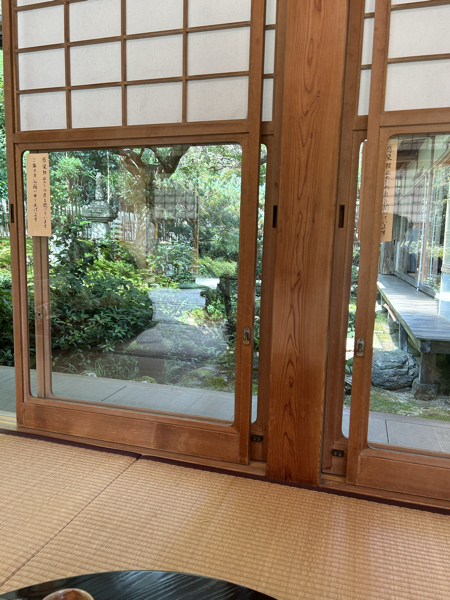
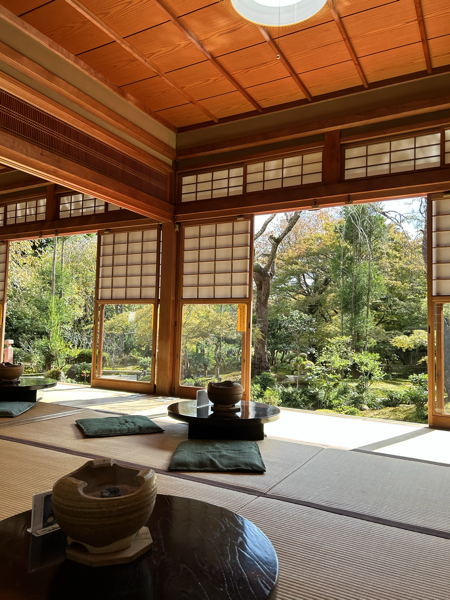
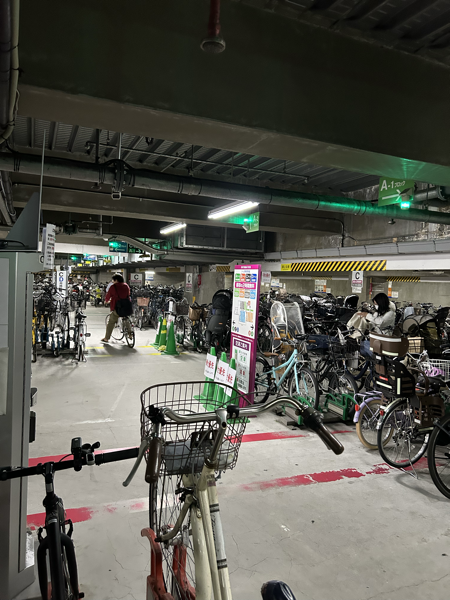
Thanks Bill, for writing the kanji. 山水 are the Chinese characters for mountain and water, and together can mean a landscape of mountains and rivers, while 枯 indicates dry/withered.
A cycle friendly city and delicious vegetarian food. No wonder you’re happy to return.
It looks so beautiful and peaceful. The Japanese attention to detail and appreciation of the essential beauty of even the smallest “banal” things always astound me. I try to incorporate these ideas into my own life….and it really helps to offset the feelings of doom the world tends to bring.